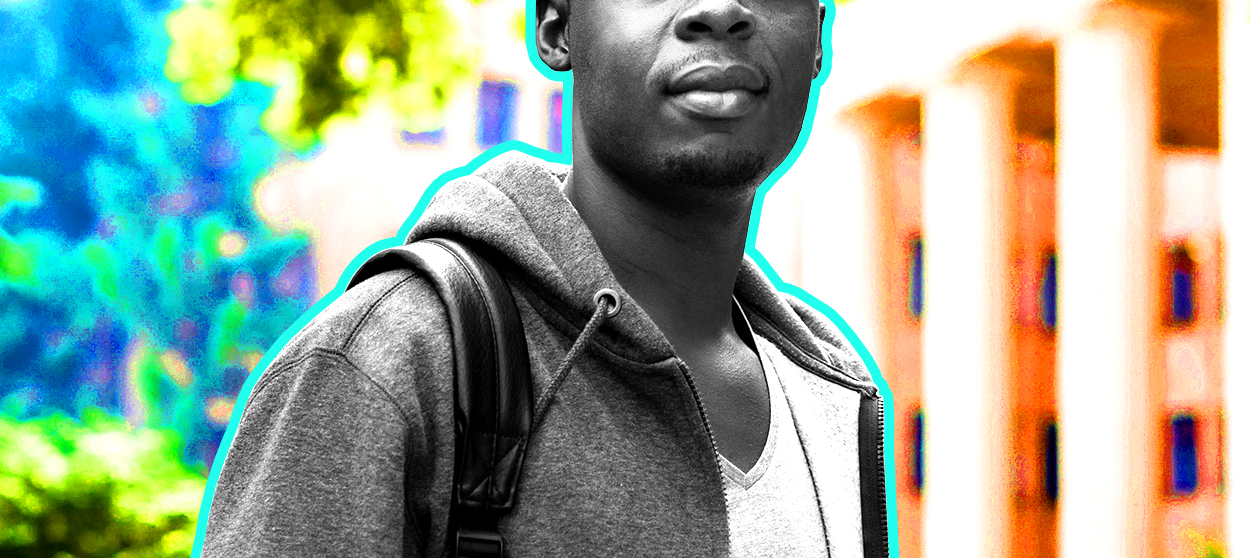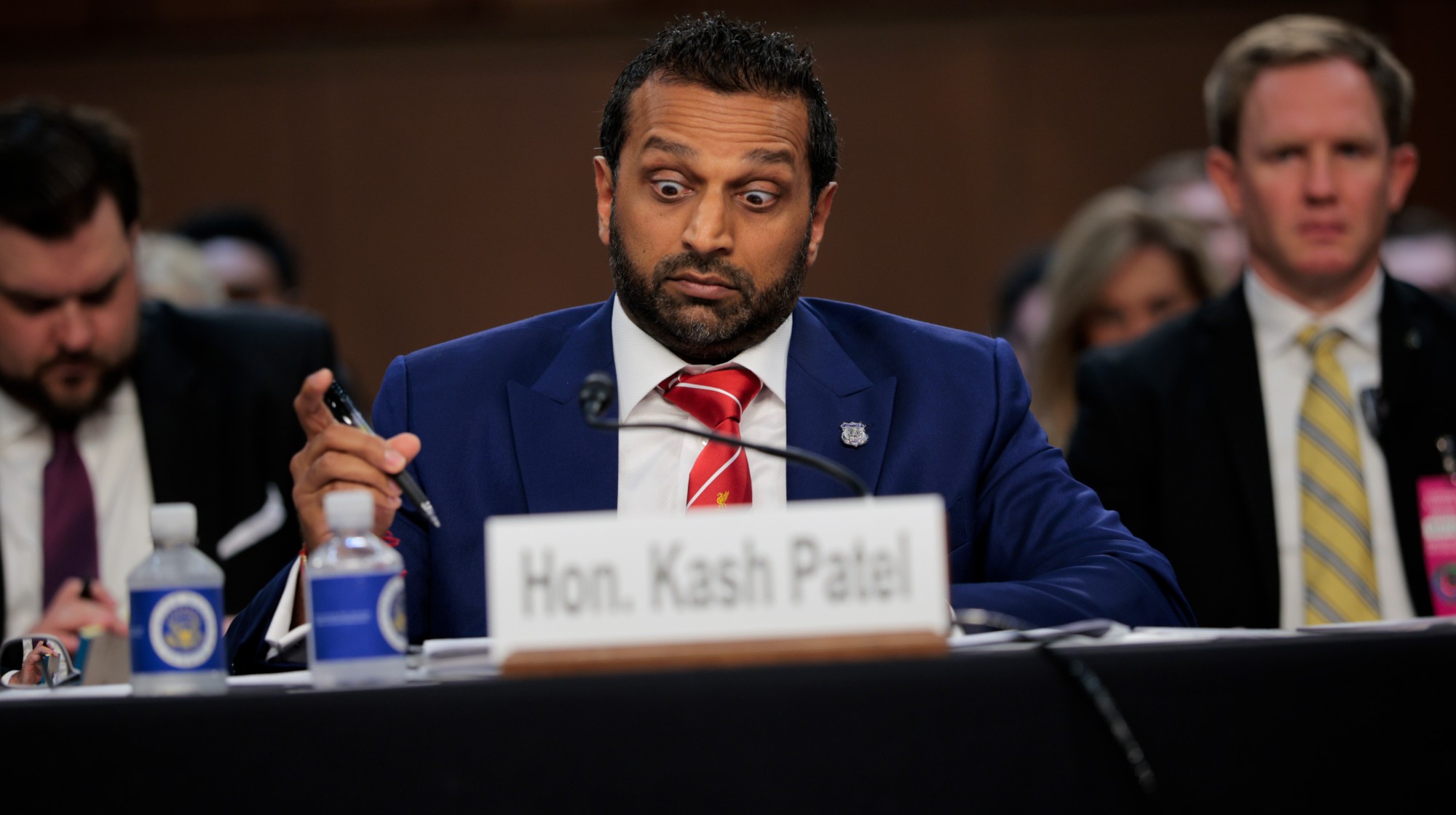How the student debt crisis falls hardest on black Americans
A new report highlights the effects of systemic racism across generations


Thanks to the Democrats' 2020 presidential primary, two long-simmering crises are finally getting a major examination by American politics: the $1.6 trillion student debt burden, and the country's vast racial wealth gap. These two topics also overlap and interlock in subtle but important ways that are worth exploring in their own right — which is exactly what a new paper from the left-leaning Roosevelt Institute does.
The question of student debt leaves Americans caught between a hammer and an anvil: Taking on that debt is a crucial tool by which students (and, by extension, their families) gain access to higher education. But at the same time, that debt is a threat to students' future financial prospects. What the Roosevelt team teases out is that, thanks to the racial wealth gap — both the historical circumstances that birthed it, and its ongoing economic consequences — that paradox is worse for black students and their families. Their need for higher education is greater than their white peers, debt plays a bigger role in securing them that access, and any given amount of debt poses a bigger danger to their livelihoods.
"The findings discussed in this report show that student debt is both more necessary and riskier for Black families than for white families; and, therefore, perpetuates racial wealth inequality," write authors Suzanne Kahn, Mark Huelsman, and Jen Mishory. For black Americans, the hammer is more powerful and the anvil is more unyielding.
The Week
Escape your echo chamber. Get the facts behind the news, plus analysis from multiple perspectives.

Sign up for The Week's Free Newsletters
From our morning news briefing to a weekly Good News Newsletter, get the best of The Week delivered directly to your inbox.
From our morning news briefing to a weekly Good News Newsletter, get the best of The Week delivered directly to your inbox.
First, the distribution of wealth in America is just insanely unequal across the board: The top 10 percent of U.S. households control 76 percent of the country’s wealth, and the top one percent control 35 percent. These numbers are also mirrored within the white population by itself and the black population by itself. If you combine the question of wealth inequality with racial inequality, what you find is that black Americans are packed into the lower rungs. When it comes to the bottom 10 percent of American wealth owners, just over half are white and a third are black. Meanwhile, 88.5 percent of the top 10 percent of wealth owners are white. Also crucial to realize is that these disparities occur up and down the class ladder: The median white family headed by someone with only a high school education has more wealth than the median black family headed by someone with a college degree.
The consequences for who suffers from student debt are myriad. Because they have fewer resources to draw on from the start, black students take out more debt than their white peers: For college freshman in the 2003-2004 year, 78 percent of the black students had student loans versus just 57 percent of the black students, for instance. Borrowing by black students over recent decades has also grown at a faster rate than white borrowing. The parents of black students contribute comparatively more to the cost of their childrens' educations, they’re more likely to take out loans to help pay for college, and these families are more likely to take on riskier private loans.
The explanation for that racial wealth gap lies in America's long history of slavery, segregation, and discrimination. But that history also warps the school system itself. The courts didn't even get around to desegregating the states' university systems until the 1970s. Historically black colleges and universities (HBCUs) remain chronically underfunded: HBCUs' alumni have less wealth, their endowments are smaller, and one study found that four traditionally white universities received more funding from all levels of government than 89 HBCUs. These disparities also show up in the wealth and resources available to black communities across the country, and thus in the resources available to the K-12 education system, which remains highly segregated. Black students also have to work more often while enrolled in higher education to support themselves.
As a result, black students arrive at college less prepared than their white peers, and the colleges black students disproportionately attend are comparatively under-resourced. Black students graduate college at lower rates than white students — 45.5 percent compared to 59 percent, according to one study. Since basically all the future income benefits of college come from actually getting the degree, this leaves black Americans even more vulnerable to the downsides of student debt loads later in life.
A free daily email with the biggest news stories of the day – and the best features from TheWeek.com
Finally, black Americans face all sorts of other disproportionate hurdles in the workforce even if they do graduate. Thanks to everything from outright discrimination in hiring to segregation's long-run effects on where economic growth occurs and where it doesn't, black Americans chronically suffer an unemployment rate roughly twice that of white Americans — and that racial disparity holds true within the population of college graduates. At every education level, black workers bring in less income than their white peers.
All of that means that any given amount of debt is more likely to go bad for black Americans than for white Americans. The research the Roosevelt Institute report reviewed found that black four-year graduates default on their debt five times more often than white graduates, even after controlling for variables like GPA, employment, and degree. One study found that, 12 years after entering college, the median black borrower had seen their balance increase, while whites typically owed 65 percent of their original loan. Thanks to everything above, black families can also provide less help and inheritance to cushion black borrowers against these risks. What's particularly perverse is that black workers typically have to possess higher degree credentials to make the same amount as their white peers — which requires them to take on even more debt.
The policy implications of all this are complicated, but Kahn, Huelsman, and Mishory note a few broad takeaways: We need to massively reduce the cost of college, so as to end students' reliance on debt across the board. (Instead, the cost of public college has increased 12 times over since the late 1970s, as government has cut back on support.) We need to go after the disparities in resources and completion rates for colleges, and crack down with regulation on the for-profit college industry.
Finally, canceling student debt will close the racial wealth gap almost by definition. An interesting debate has broken out over whether to means-test student debt cancellation or not. And while means-testing is arguably preferable, thanks to the concentration of white wealth owners at the top, another facet is that total cancellation will actually close the racial wealth gap more for households lower down the distribution, because the debt burdens for poorer black Americans tend to be higher.
But maybe the most fundamental takeaway is in the stories we tell ourselves. We like to think that American capitalism is a functioning meritocracy: that skills are rewarded in the market, which is why student debt is worth taking on; and that economic disparities created by past discrimination and injustices will fade away once those practices are ended. The intersection of the racial wealth gap and the student debt crisis should disabuse us of both assumptions.
Want more essential commentary and analysis like this delivered straight to your inbox? Sign up for The Week's "Today's best articles" newsletter here.
Jeff Spross was the economics and business correspondent at TheWeek.com. He was previously a reporter at ThinkProgress.
-
 The Trump administration says it deports dangerous criminals. ICE data tells a different story.
The Trump administration says it deports dangerous criminals. ICE data tells a different story.IN THE SPOTLIGHT Arrest data points to an inconvenient truth for the White House’s ongoing deportation agenda
-
 Ex-FBI agents sue Patel over protest firing
Ex-FBI agents sue Patel over protest firingspeed read The former FBI agents were fired for kneeling during a 2020 racial justice protest for ‘apolitical tactical reasons’
-
 The real tragedy that inspired ‘Hamlet,’ the life of a pingpong prodigy and the third ‘Avatar’ adventure in December movies
The real tragedy that inspired ‘Hamlet,’ the life of a pingpong prodigy and the third ‘Avatar’ adventure in December moviesThe Week Recommends This month’s new releases include ‘Hamnet,’ ‘Marty Supreme’ and ‘Avatar: Fire and Ash’
-
 Has Zohran Mamdani shown the Democrats how to win again?
Has Zohran Mamdani shown the Democrats how to win again?Today’s Big Question New York City mayoral election touted as victory for left-wing populists but moderate centrist wins elsewhere present more complex path for Democratic Party
-
 Millions turn out for anti-Trump ‘No Kings’ rallies
Millions turn out for anti-Trump ‘No Kings’ ralliesSpeed Read An estimated 7 million people participated, 2 million more than at the first ‘No Kings’ protest in June
-
 Ghislaine Maxwell: angling for a Trump pardon
Ghislaine Maxwell: angling for a Trump pardonTalking Point Convicted sex trafficker's testimony could shed new light on president's links to Jeffrey Epstein
-
 The last words and final moments of 40 presidents
The last words and final moments of 40 presidentsThe Explainer Some are eloquent quotes worthy of the holders of the highest office in the nation, and others... aren't
-
 The JFK files: the truth at last?
The JFK files: the truth at last?In The Spotlight More than 64,000 previously classified documents relating the 1963 assassination of John F. Kennedy have been released by the Trump administration
-
 'Seriously, not literally': how should the world take Donald Trump?
'Seriously, not literally': how should the world take Donald Trump?Today's big question White House rhetoric and reality look likely to become increasingly blurred
-
 Will Trump's 'madman' strategy pay off?
Will Trump's 'madman' strategy pay off?Today's Big Question Incoming US president likes to seem unpredictable but, this time round, world leaders could be wise to his playbook
-
 Democrats vs. Republicans: who are US billionaires backing?
Democrats vs. Republicans: who are US billionaires backing?The Explainer Younger tech titans join 'boys' club throwing money and support' behind President Trump, while older plutocrats quietly rebuke new administration
